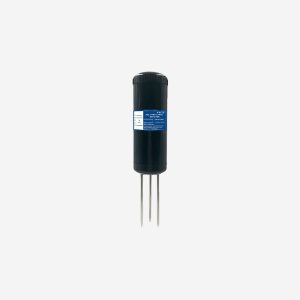Product Introduction
Simulation of soil PH sensor to the acidity and alkalinity of the soil, and its range is 0-14. If the pH is equal to 7, the reaction is neutral, <7 is acidic, and >7 is alkaline. The pH of the soil has an important influence on the content of nitrogen, phosphorus and potassium in the soil, and thus has an important impact on the healthy growth of plants. For soil pH measurement, we can use Proximity’s soil pH sensor.
*Model: JXBS – 3001
*Minimum order quantity: 1 piece
*Delivery date: within 24 hours
Simulation of soil ph sensor Feature

The detector adopts a large size full-color LCD screen, which can display the reading in real time. At the same time, the detection circuit designed by the digital chip of the international major factory is used, which can achieve very high sensitivity and excellent repeatability. The shell is made of industrial high strength composite plastic, with a good sense of strength.
1. Large-screen display and large-capacity storage.
2. Diversification of key functions.
3. Small zero drift and good repeatability.
4. Automatic alarm/elimination function.
5. Low power consumption, long life.
6. High sensitivity and fast response speed.
7. One-click data export, convenient and fast.
8. The product has passed a variety of tests and has strong anti-interference ability.
9. Supports cloud data reporting.
Product Parameters:

| Parameter name | Measuring range | Unit |
| Power supply range | lithium battery | |
| Measurement range | PH:3-9 | |
| Measurement principle | galvanic cell | |
| Display | Three rows 105*55 | cm |
| Storage | 200,000 | sets |
| Size | 125 * 65 * 45 | mm |
| Communication mode | USB (read, see DB9 interface description for details) | |
| Operating temperature | .-20~50 | ℃ |
| Operating humidity | 0~90% | |
| Communication protocol | Modbus serial communication protocol | |
| Charging time | ≤4H | |
| Connectable device | 1~8 | sets |
How to use soil pH sensor?
For the first use, it is necessary to insert several times into the soil to remove the oxide film from the probe surface. The probe is then inserted vertically into the soil, avoiding rocks. In addition, you can manually dig a pit in the ground, then insert the sensor horizontally into the pit wall and bury the map.
Soil pH sensor measures area
The measuring area is a cylinder centered at the center of the two probes, with a diameter of 5 cm and the same height as the probes. As shown in the picture:
Measurement area:
φ=5cm, the cylinder is the same height as the probe

Precautions for using soil pH sensor:
1. All probes must be inserted into the soil during measurement.
2. Pay attention to lightning protection when using in the field.
3, do not force to bend the probe, force to pull the sensor lead, do not force to hit or hit the sensor.
4, sensor protection class IP68, can be immersed in water.
5, due to the presence of radio frequency electromagnetic radiation in the air, it is not suitable to keep the power state in the air for a long time.
FAQs:
1. How does the soil NPK sensor work?
Soil N, P and K sensor is suitable for detecting the content of N, P and K in soil, and the soil fertility can be judged by detecting the conductance transformation caused by different concentrations of N, P and K in soil.
2. What is the output of the soil moisture sensor?
The probe is powered by 4.5~30V DC power supply, and the output signal is standard RS485modbus protocol.
The probe uses 10~30V DC power supply, the output signal can be 4-20MA, 0-5V, 0-10V.
The probe is powered by a DC 3.6V lithium battery with wireless output, such as LORA output.
Attachment
Simulation Of Soil PH Sensor Instruction Manual




Reviews
There are no reviews yet.